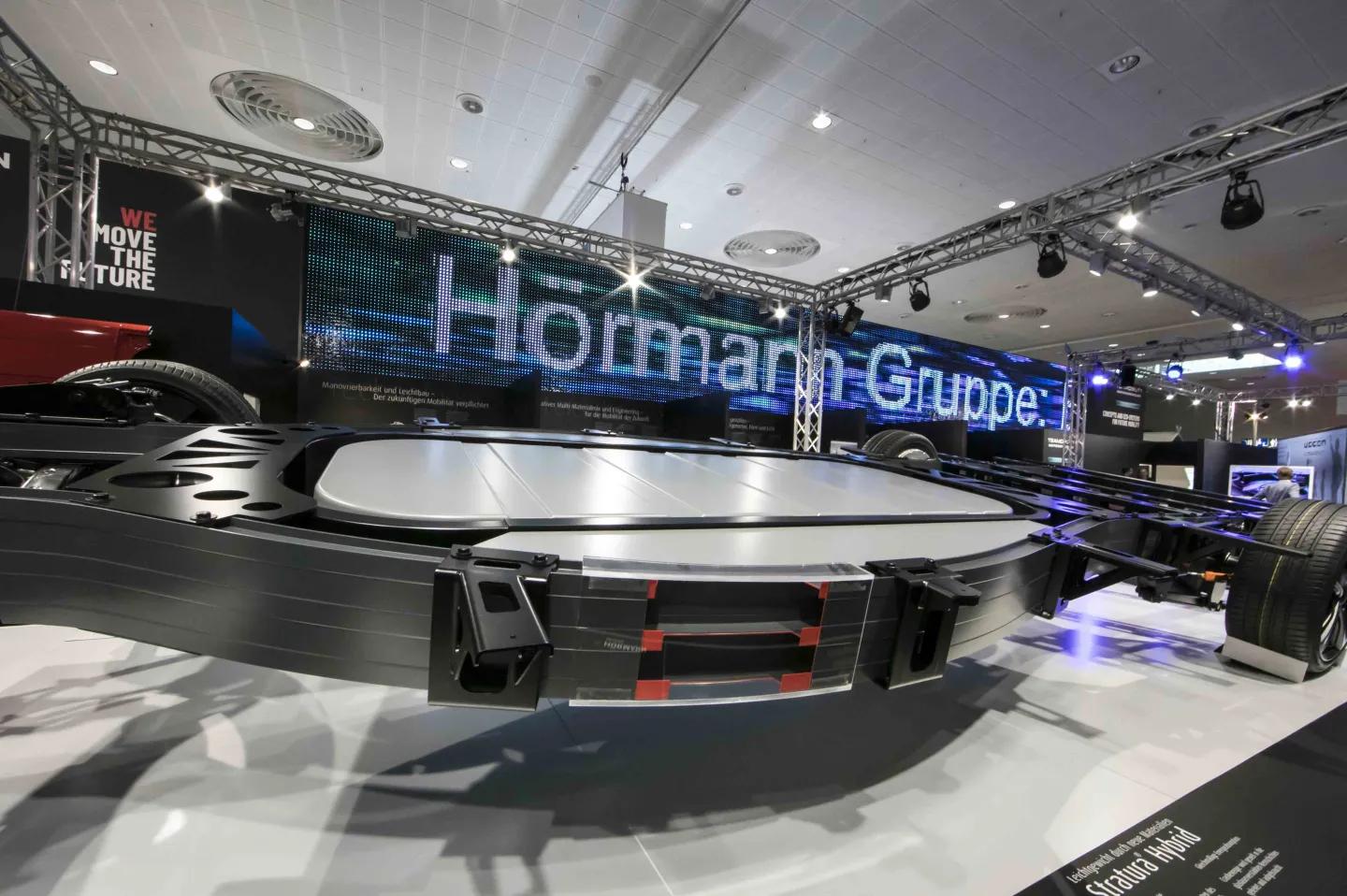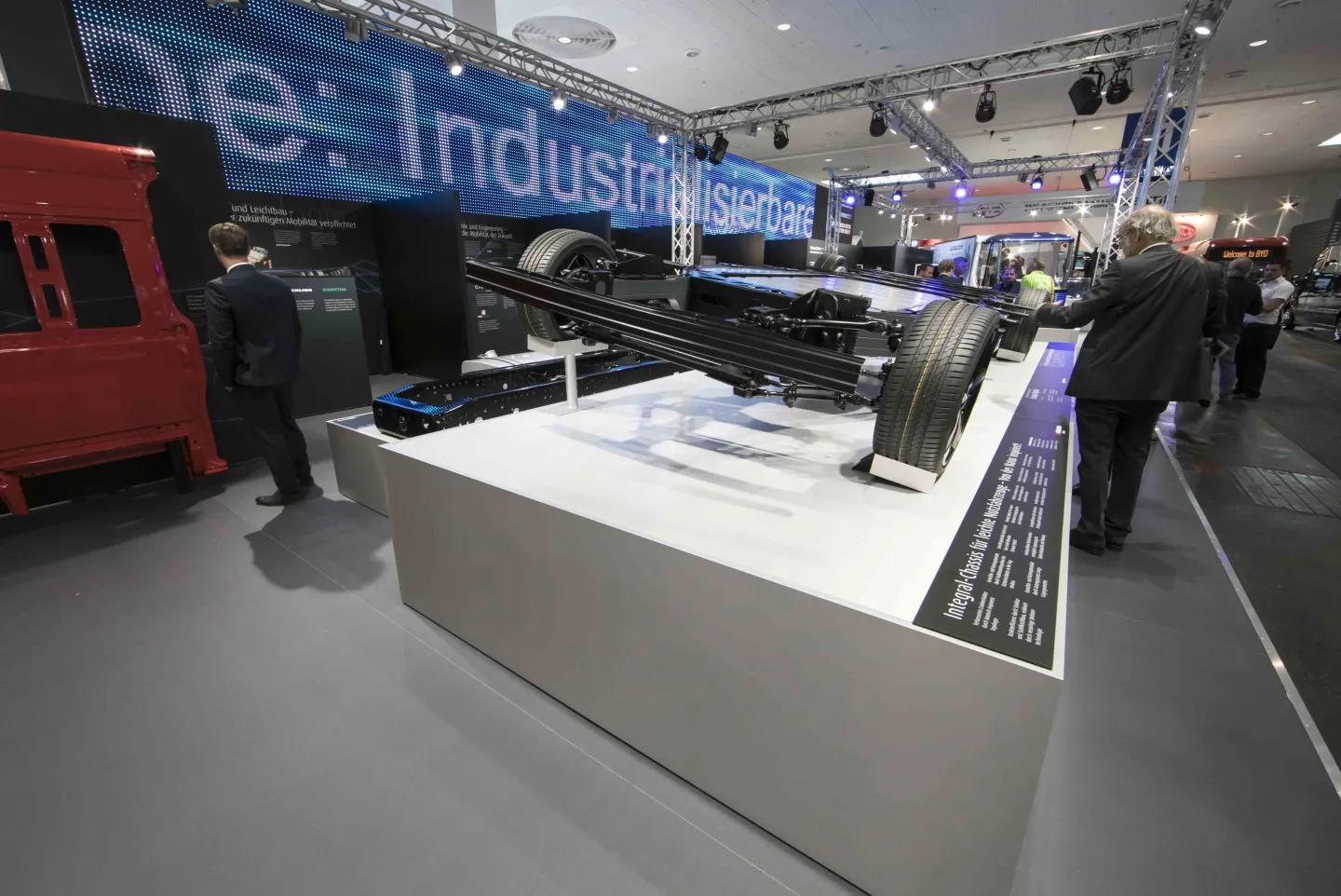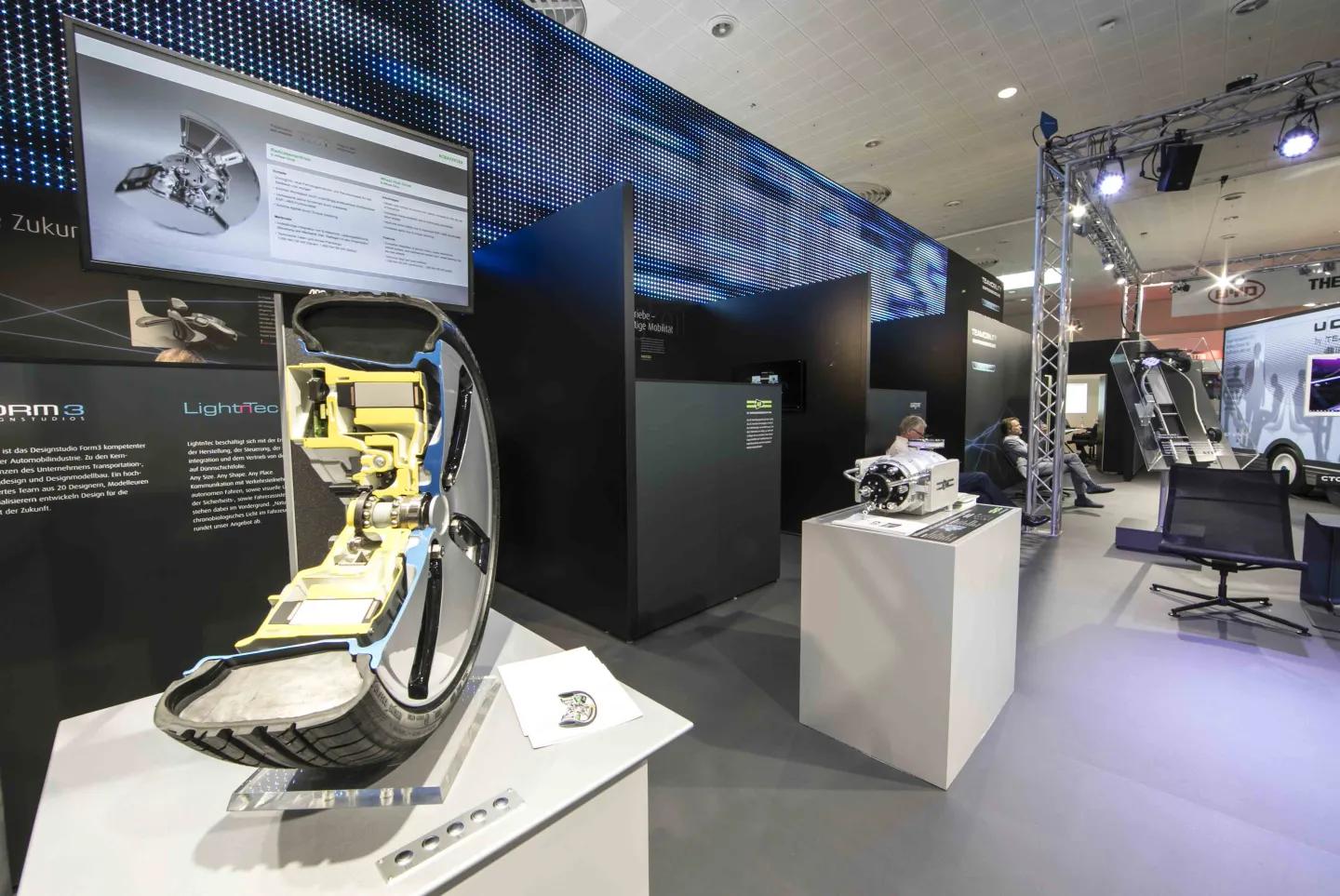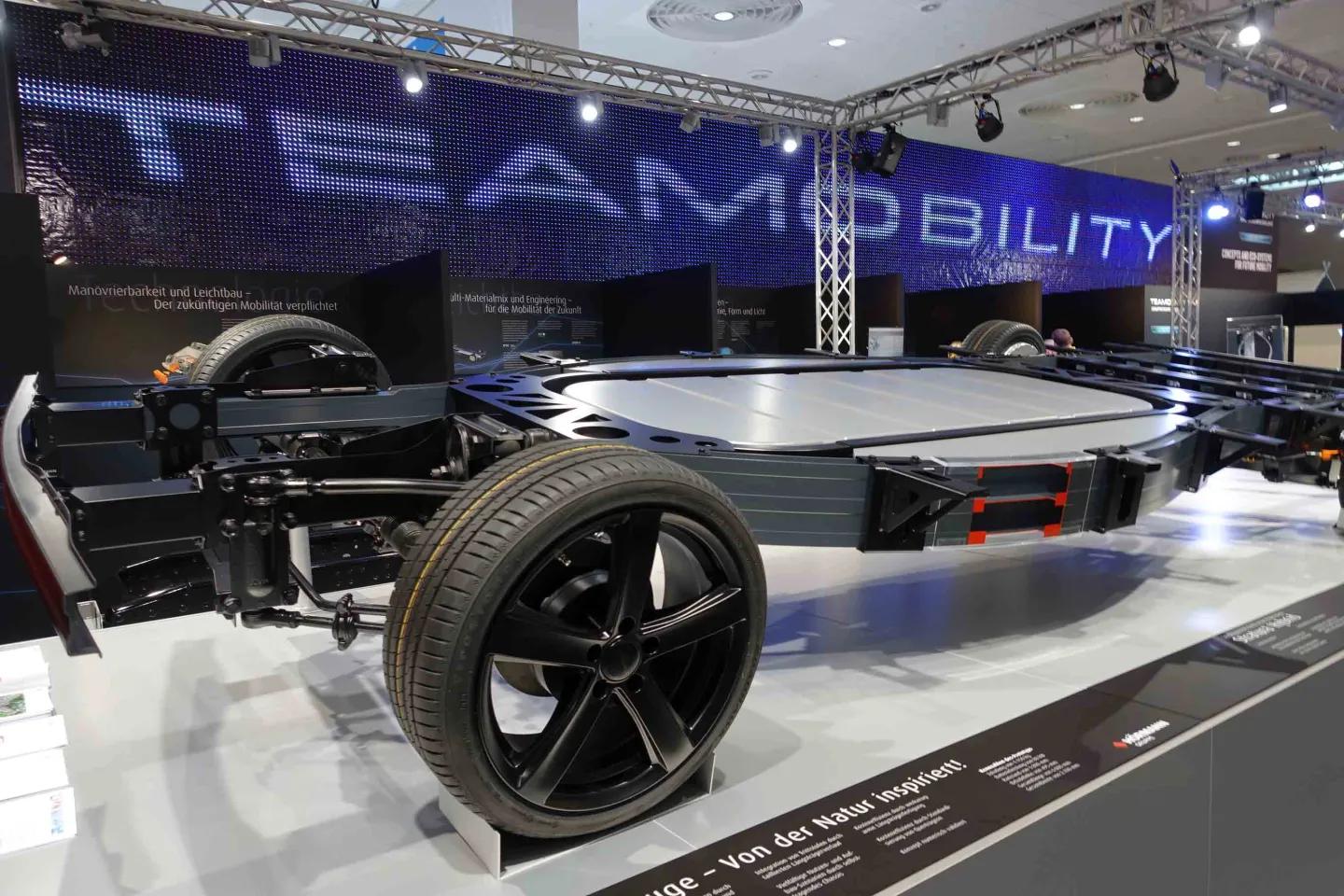
Innovation
Innovation goes hand in hand with customer benefit. We achieve this through close dialogue with our customers and close integration in our network of competence centres, universities and technology partners.
Our current technological focus is on the realisation of cost-efficient lightweight solutions, which are indispensable for our customers, particularly in light of the current trend towards electromobility. We are focussing on both structural and lightweight material solutions. We see both approaches as crucial in the commercial vehicle sector and are therefore intensively involved in the industrialisation of new lightweight steel construction technologies and strategies for processing promising lightweight materials.
Our claim is clear: we want to shape the mobility of the future together in a network of customers, universities and competence centres.
1. New, innovative product approaches
As an established system supplier to the commercial vehicle industry, HÖRMANN Automotive is committed to making a contribution to CO2-neutral logistics together with our customers through new ideas and approaches.
The associated challenges for the commercial vehicle industry in this context are immense and spur us on to overcome them together with our partners and customers.
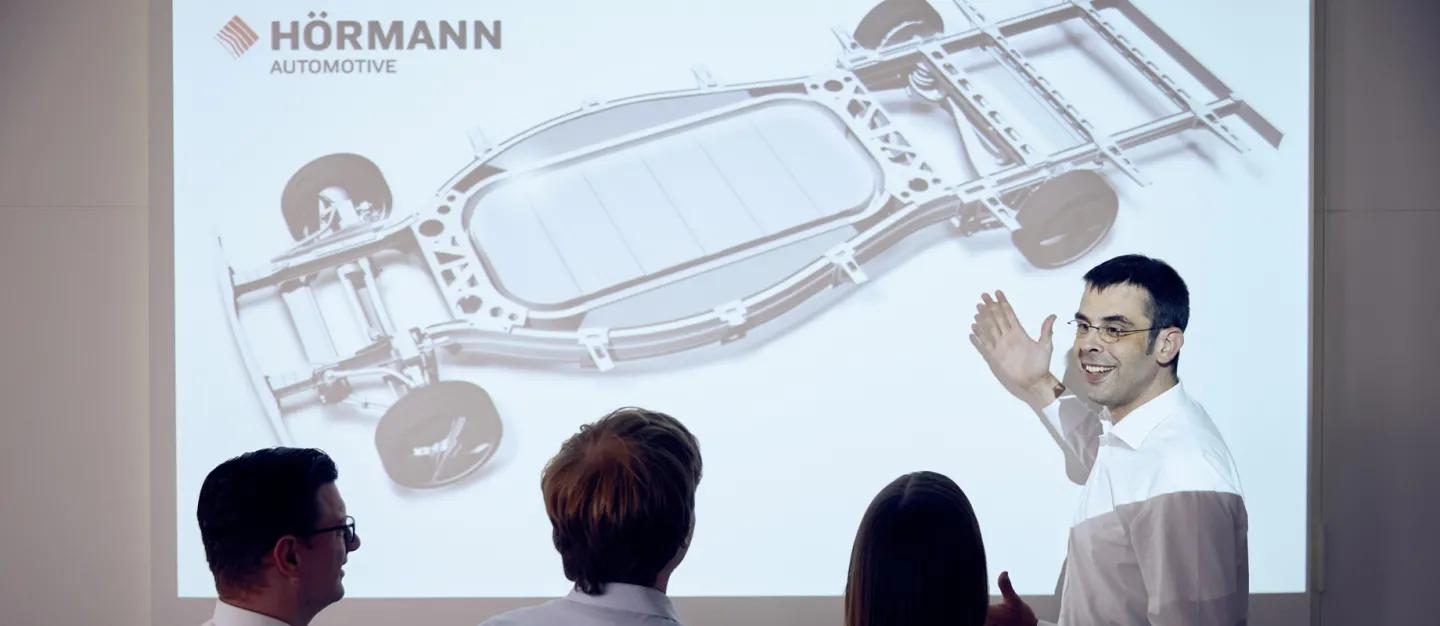
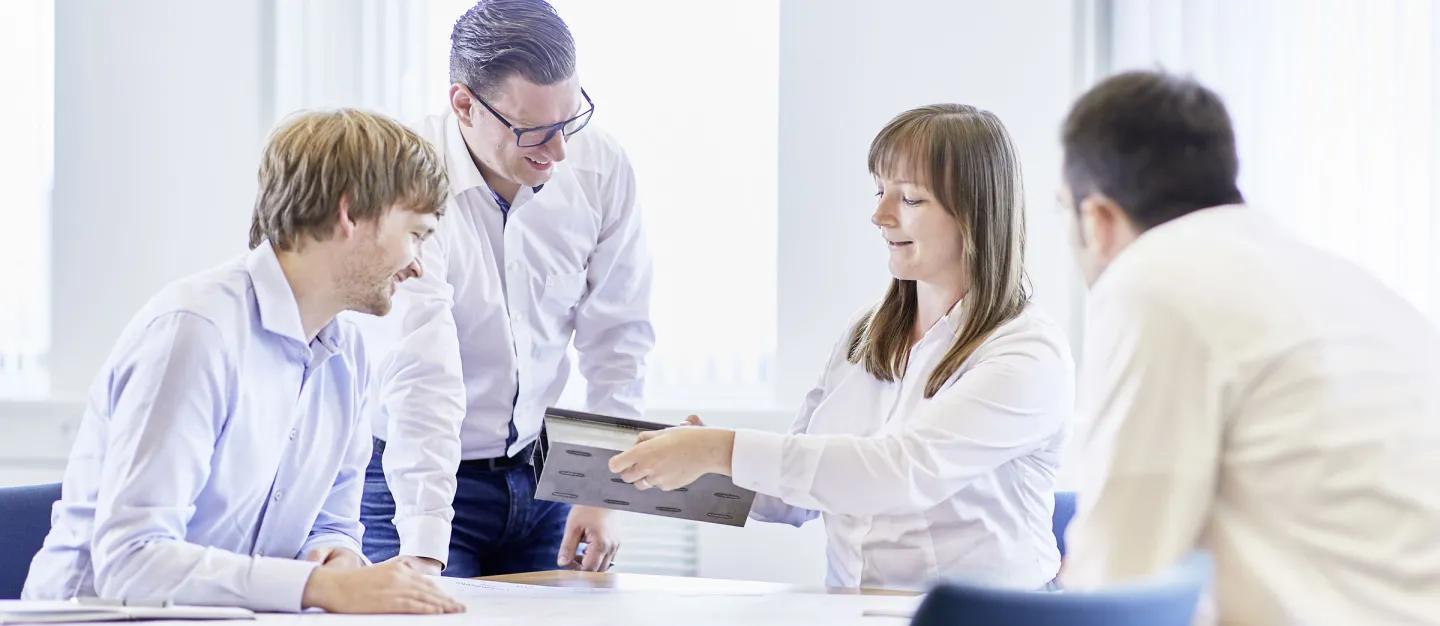
Innovation for heavy-duty commercial vehicles
For HÖRMANN Automotive, the levers for innovation in heavy commercial vehicles range from economical lightweight construction approaches to functional and component integration and new topological vehicle structures.
We are also thinking in terms of completely new vehicle systems in conjunction with the semi-trailer in order to equip ourselves technologically in the best possible way for future requirements in heavy commercial vehicles.
Here, synchronous technology development in the areas of forming and joining technology provides us with significant input for the realisation of new structures and systems that differ fundamentally from today's ladder frames in terms of weight, cost, functionality and the integration of alternative energy sources.
We are guided here by customer concerns, which we see not only in terms of weight, variance and costs, but also in particular against the background of emissions legislation for the years 2025 and 2030. New solutions are needed - which is why we are already thinking them through today.
Innovation for light-duty commercial vehicles
Solutions for future inner-city mobility and logistics require new, customised systems for alternative drive sources. To this end, we have developed a chassis concept for lightweight, electrified commercial vehicles.
It is characterised by a bionic lightweight construction approach, which is reflected in both the topology and the component design. The non-linear chassis topology enables systemic protection of the energy storage in the chassis and thus reduces the weight and costs of accommodating and protecting the batteries. The non-linear longitudinal members, in turn, are designed as steel multi-chamber profiles, which are specifically designed to absorb the impact energy in the event of a side crash.
> The HÖRMANN Group with innovative chassis concept at the IAA
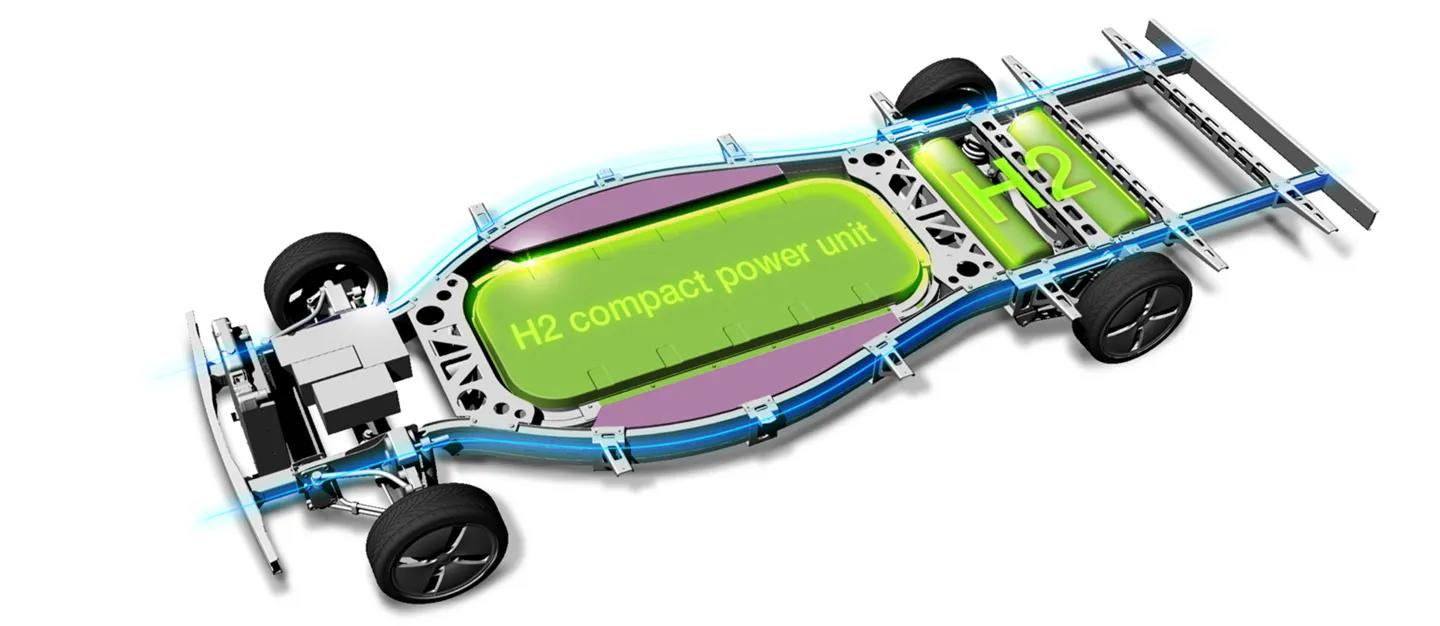
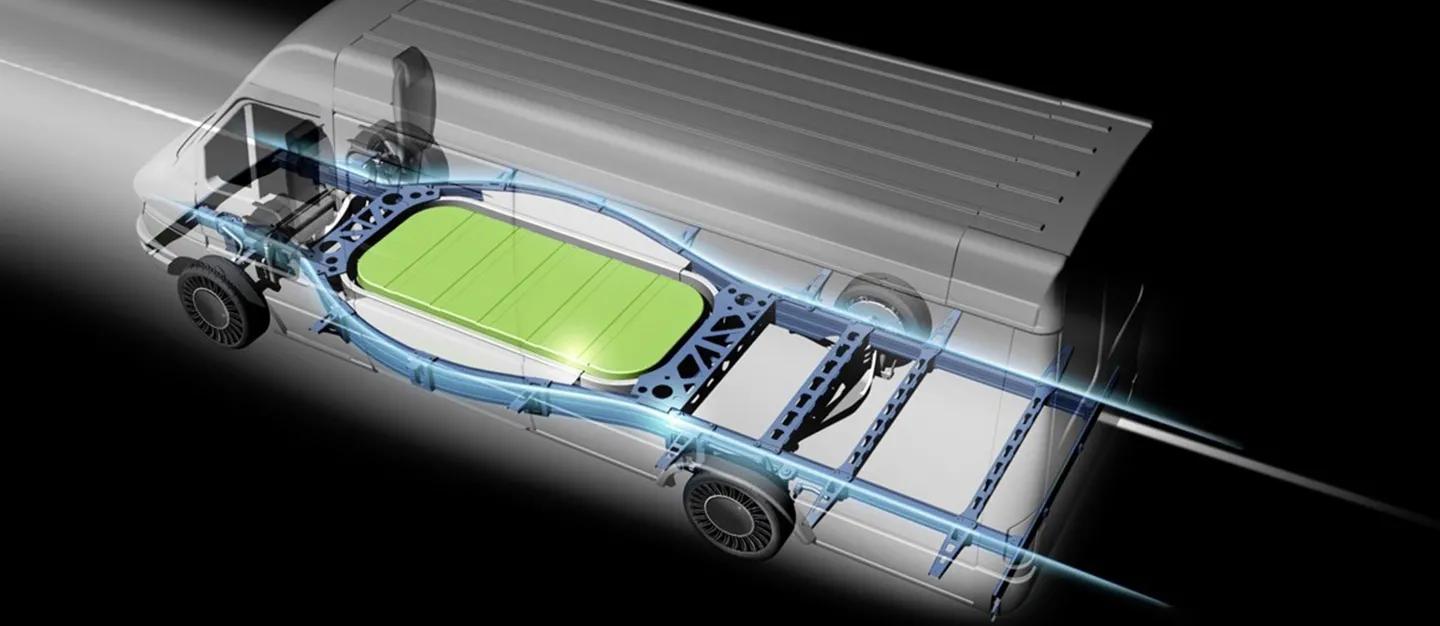
The underlying, innovative production technology enables a high degree of variance in the profile without additional mould costs and is therefore able to cover a high degree of vehicle variance in terms of wheelbase and battery dimensions.
The vehicle study is equipped with direct wheel hub drives, which reduces the entry height and maximises the potential load volume of the body at the same time.
Innovation for railway traffic
Together with HÖRMANN Vehicle Engineering, HÖRMANN Automotive is also breaking new ground in rail transport. The development of a new type of carrier wagon for rail freight transport is moving away from conventional welded assemblies and is instead based on a mechanically joined lightweight truss structure.
The carrier wagon concept addresses several customer benefits: By using highly efficient production technologies, the standardised truss elements can be manufactured cost-effectively and in short cycles. The subsequent use of mechanical joining processes reduces production costs and component distortion and also speeds up the assembly time.
At the same time, the trolley structure can be customised to different lengths and container loads - both in terms of the required lengths and the underlying loads. The result of this is a significant reduction in material usage and total weight as well as manufacturing costs.
The associated new standardised concept of the headers enables not only a reduction in weight but also the use of different coupling systems and bogies. At the same time, the end pieces can be combined with different centre segments, which increases flexibility and reduces overall costs.
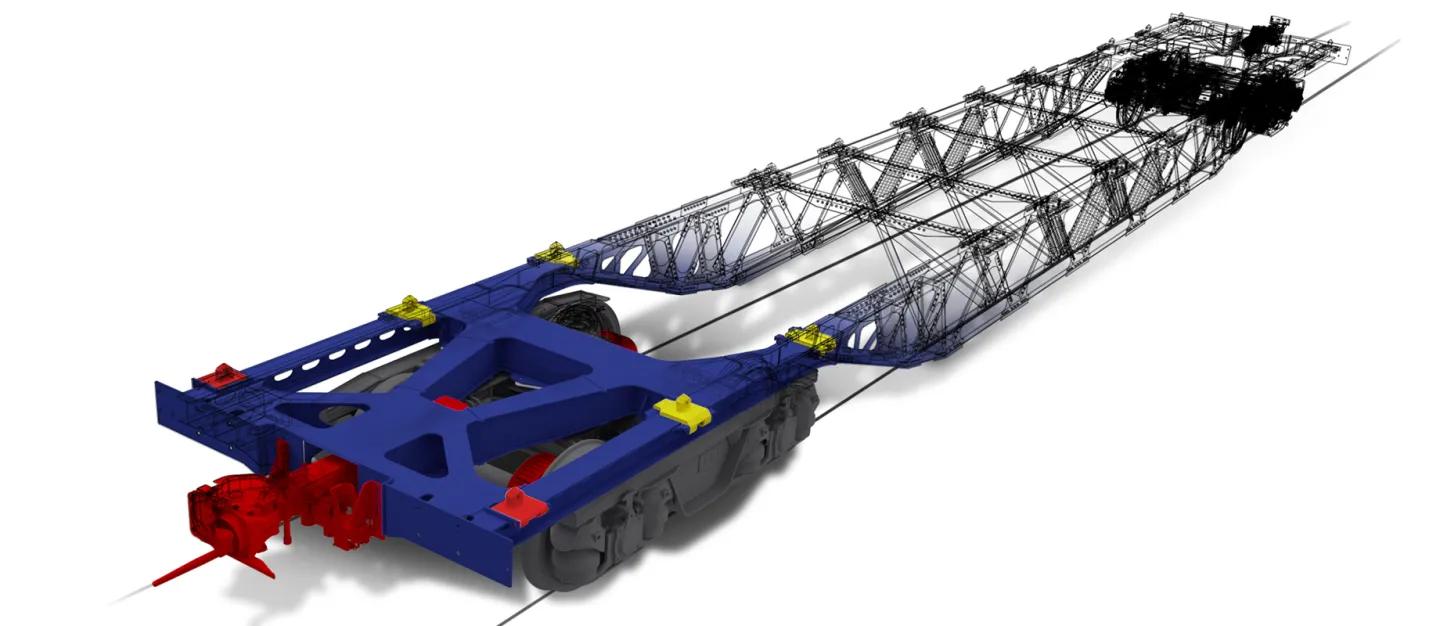
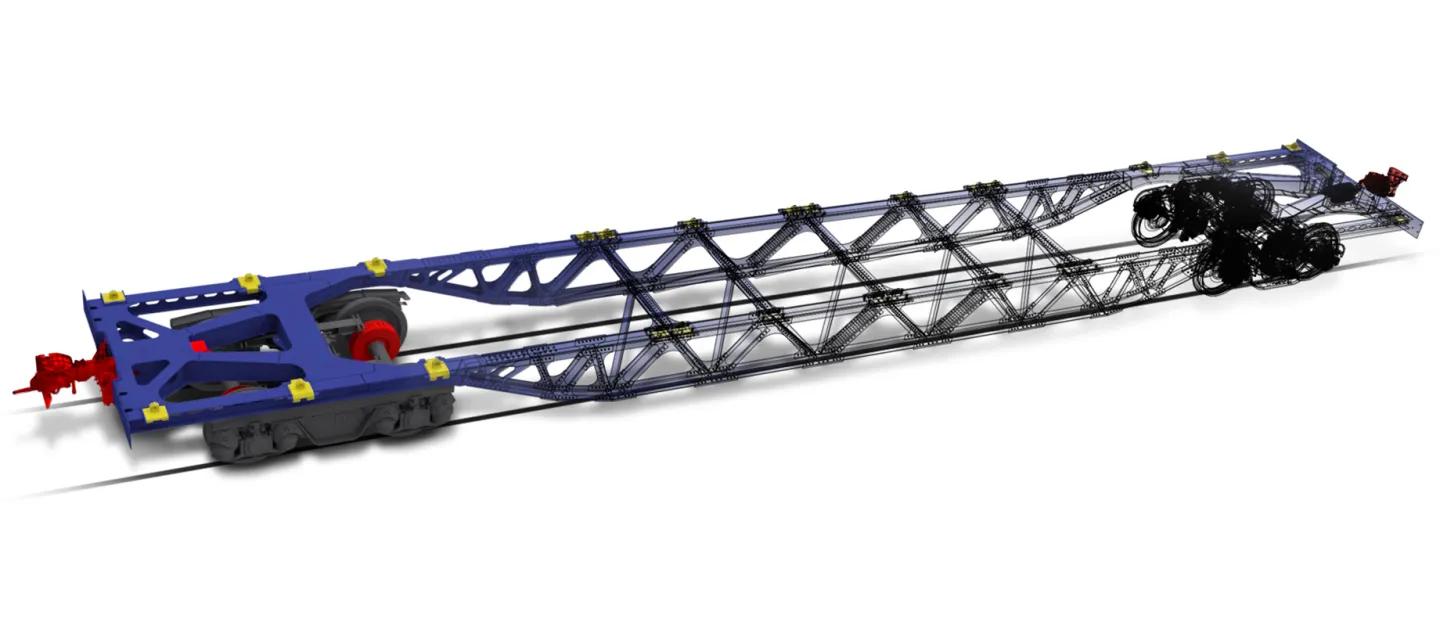
Innovation for semi-trailers
Lightweight construction in semi-trailers enables increased payloads and thus increased transport efficiency. The key prerequisite for this in a highly cost-sensitive market is economical lightweight construction strategies. HÖRMANN Automotive has developed lightweight construction concepts that can make a sustainable contribution to reducing the weight of semi-trailers and form the basis for the ongoing development of an ultra-lightweight trailer concept.
The vision is to turn the semi-trailer as the actual ‘goods carrier’ into a digitalised core element of future, climate-neutral heavy goods transport.
2. Innovation in Technology Development
We support you in realising your ideas with new technological approaches. To this end, we work consistently to further develop our technologies and processes in line with the latest trends, which are currently impacting us in the form of alternative drive systems and digitalisation.
Development of lightweight technologies
The discipline of lightweight construction is experiencing a completely new relevance against the backdrop of alternative drive systems: The aim is to reduce moving masses in order to gain range and compensate for additional loads due to energy storage. We are doing this by developing new process chains for processing high-performance steel and non-ferrous materials. At the same time, we see great potential in the technological ability to create load-adaptive structures in lightweight structural engineering. Conventional forming processes often only offer the necessary degrees of freedom at considerable additional cost. With increasing flexibility of the forming process in terms of the degrees of freedom that can be achieved, we see ourselves in a position to produce load-optimised structures and to be able to realise these in high variance at attractive cost. We are currently pursuing this goal in particular with our endeavours in relation to free-form bending and gap profiling.
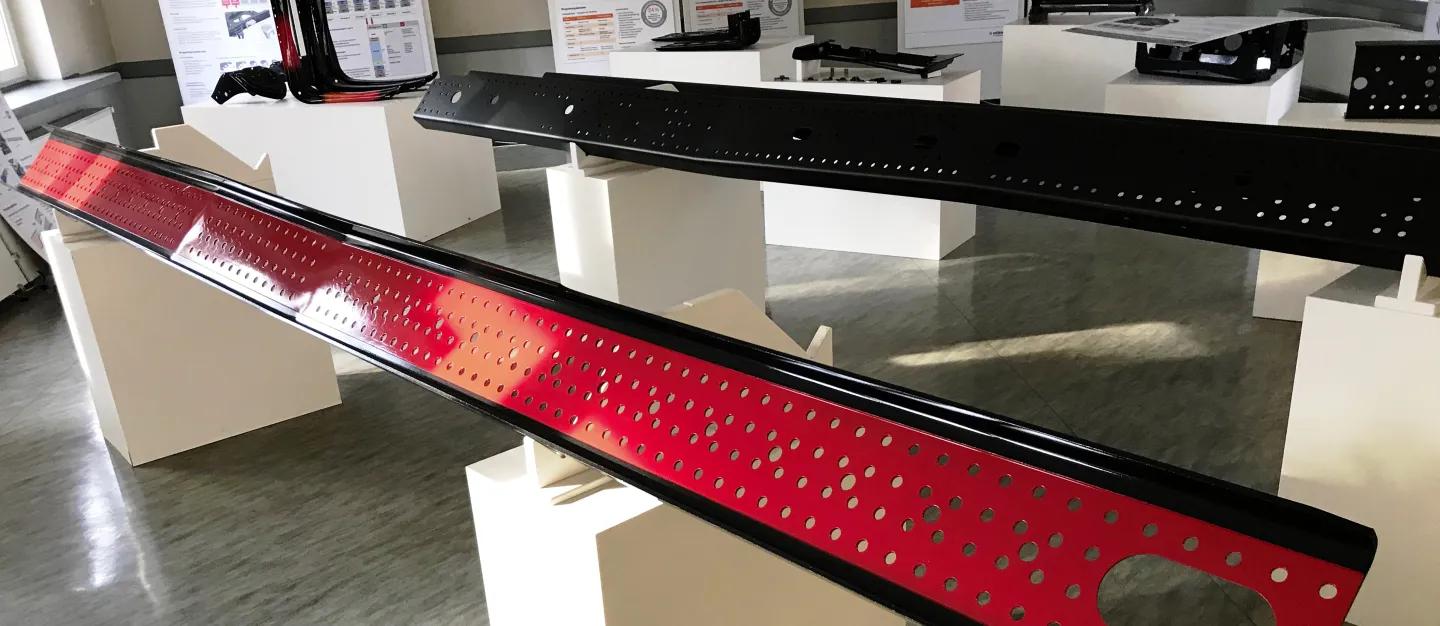
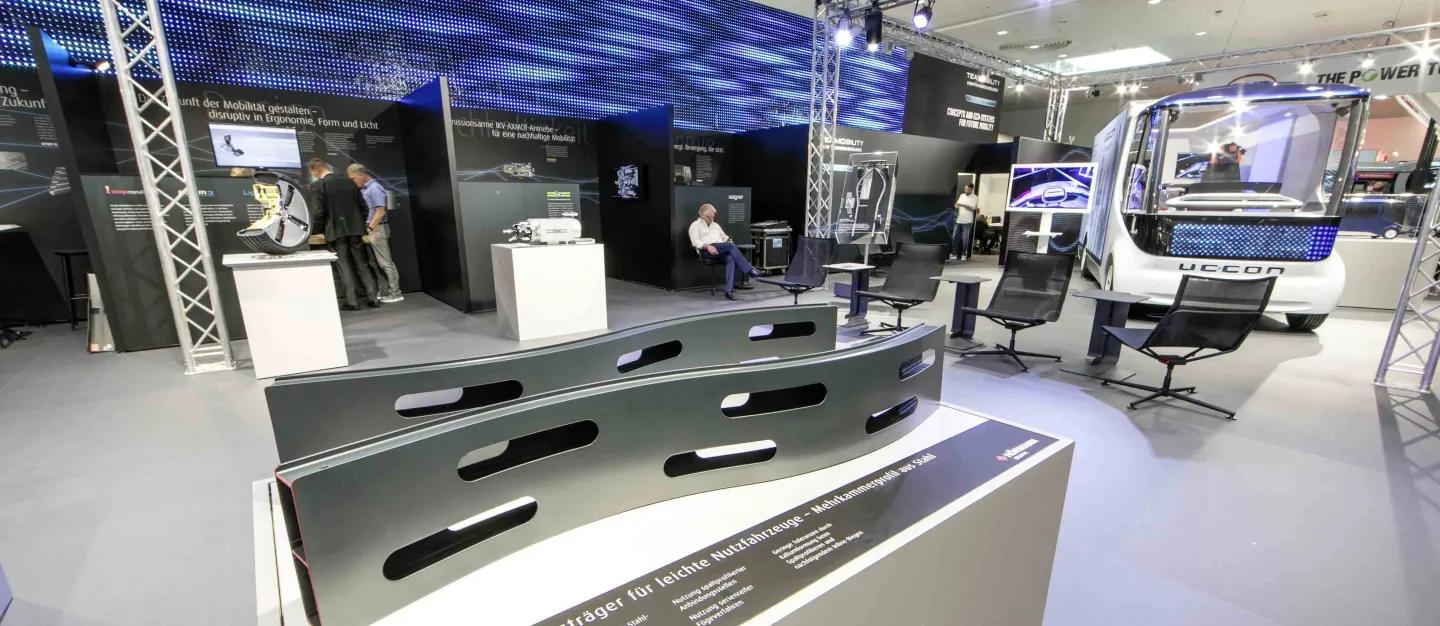
Integrally branched structures due to linear flow splitting
The production of integrally branched profiles offers innovative solutions in terms of component connection and the utilisation of integrally branched multi-chamber profiles. In this process, a flat sheet is formed into a double-T profile as part of a continuous rolling process by moulding rollers on both strip edges, which offers new design options in terms of lightweight construction and functional integration. At the same time, it is possible to produce non-linear profiles by integrating a bending process into the production line. This means that the ‘gap profiling’ mass production process can also offer significant added value in applications with high variance. This has been proven in the context of the bionically orientated vehicle topology of the Hörmann integral chassis, which can be produced with minimal tool investment thanks to the process chain described, even with high variance - particularly in terms of wheelbase and chassis dimensions.
Free-form bending
The stringent continuation of the technological focus of tube bending at HÖRMANN Automotive is free-form bending. Extensive geometric design freedom in the profile without additional tool costs enables the cost-attractive production of innovative, topographically optimised structures. We work closely with system manufacturers and universities in the ECO system to further develop free-form bending against the background of batch- and geometry-related component tolerances through adapted control and regulation mechanisms.
Development of process chains for the production of hybrid composites
In many cases, multi-material systems offer added value, particularly in the area of large-scale component applications in the agricultural machinery sector, which are both weight and wear-sensitive and also have to fulfil additional functions due to the attachment of a wide variety of add-on parts. We take this trend into account and are involved in the development of metal-plastic composites with a focus on optimising the use of materials and intelligent options for process integration while maintaining component performance.
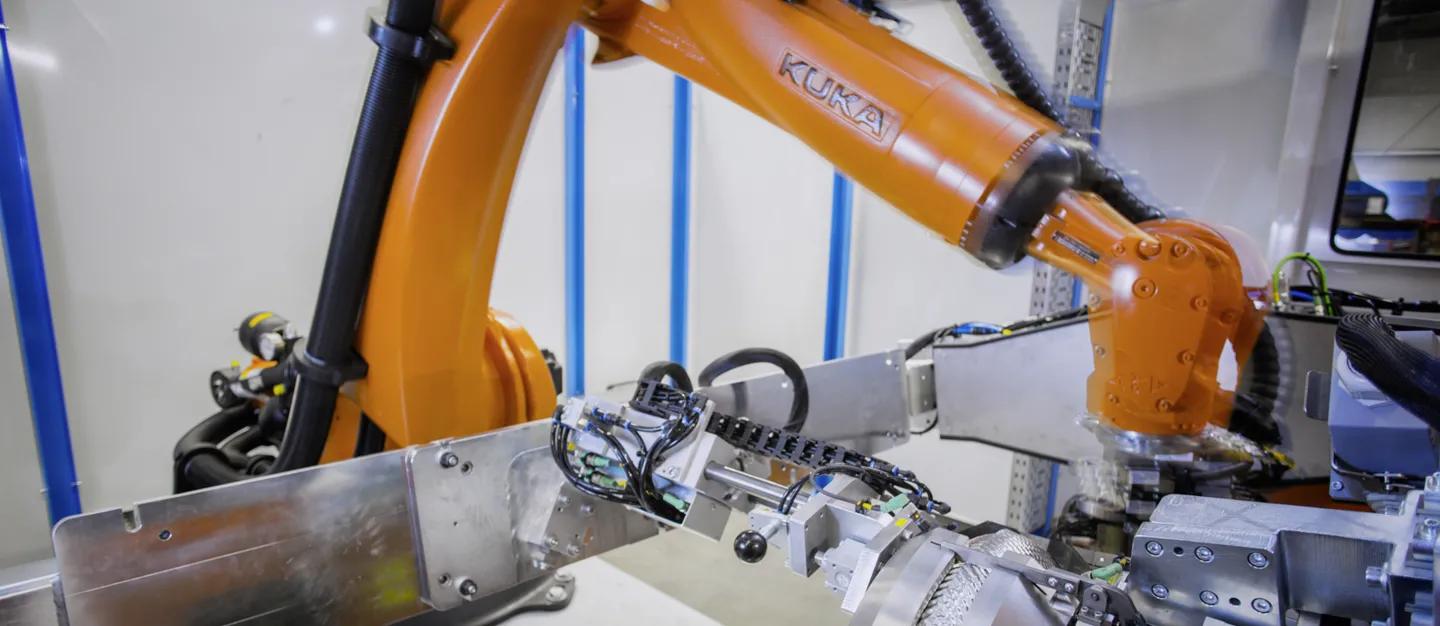
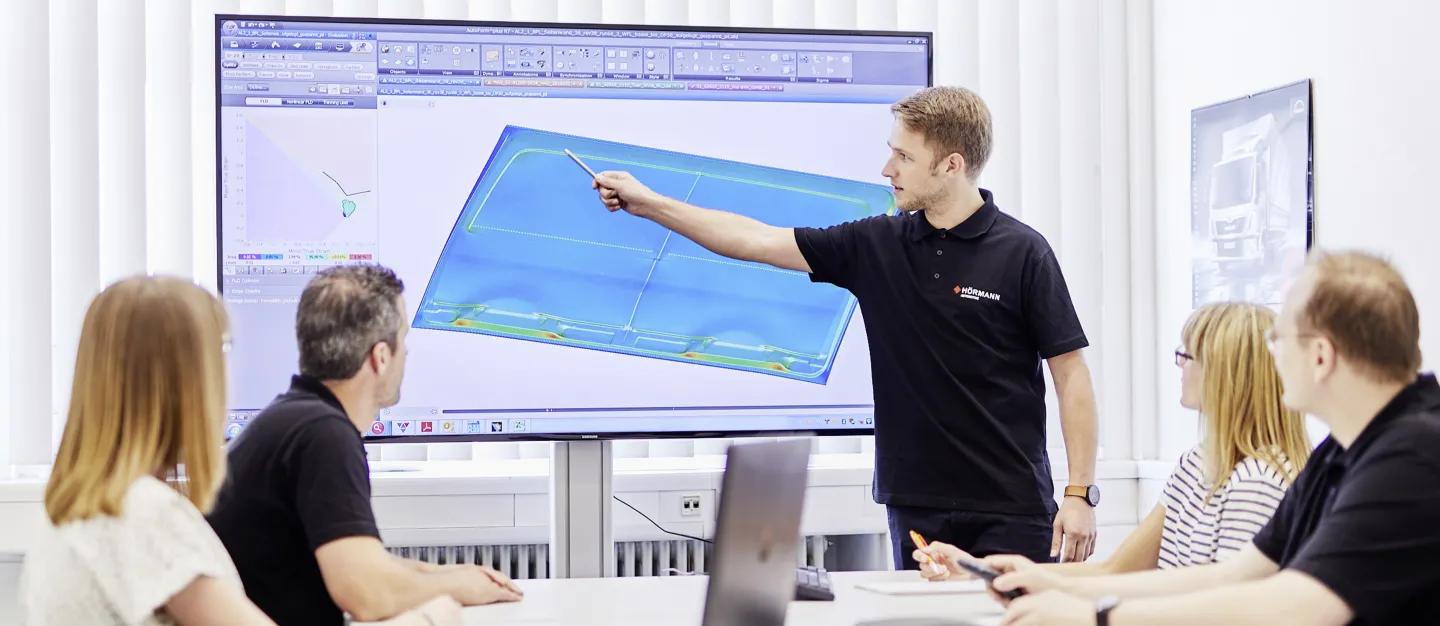
Digitalisation in forming Technology
Smart tools
New approaches to tool digitalisation allow us to track component quality where it is created: in the tool. The integration of sensory elements in tool systems allows us to have a transparent view of the forming process for the first time and thus enables us to develop technological processes based on cause-and-effect chains within the tool.
